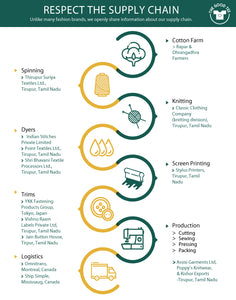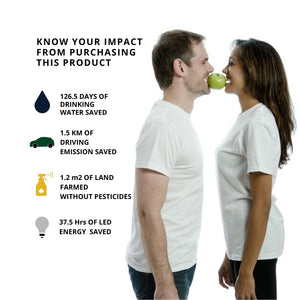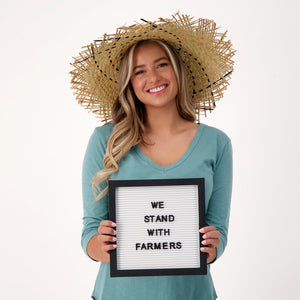Upcycling vs Recycling, a #GoodTribe Interview with Founders of Unbelts and Rags2Riches.

Do you know the difference between upcycling and recycling? According to the UN, not that much, and we have less than a decade to prevent irreversible damage. When we upcycle and recycle we can take control and do our part.
While both recycling and upcycling reduces the amount of junk that goes to our landfills, upcycling turns that same waste into a product of a higher quality–while recycling slightly decreases the quality of certain materials.
Currently, the world only recycles 67 million tons of waste and garbage, when there is more than 260 million tons that can be recycled! Well, our two heroes set their mission to fight against this statistic through recycling and upcycling.
Meet Reese, founder of Rags2Riches, and Claire, founder of Unbelts. These two good humans strong female founders have been fighting for good more than 10 years in different ways, but with the same goal: making sure our planet lives for as much as possible. They are making sure they do this through upcycling and recycling.
We sat with them to have a conversation and learn more about how through upcycling and recycling, they are making our home a better place.
Let’s start with Reese, and how she is transforming the world using waste to create every Rags2Riches product, and help the environment we all live in. Her fashion and design house empowers community artisans in the Philippines making everything from sustainable home furnishings, to clothing and accessories.

-
Can you tell us how you got into upcycling?
When we started 13 years ago, “upcycling” was not really a top-of-mind for us. We started because we wanted to create fair and meaningful livelihood opportunities for artisans from impoverished communities. It was initially coincidental that the artisans we initially worked with were already upcycling scrap fabric for practical reasons (those were the kinds of materials available to them). However, as we progressed, we realized that textile waste is a huge problem and if we just provide a livelihood to artisans without taking into consideration the environment they live in, we will always be taking steps forward and a few steps back. Realizing this, we included upcycling as one of our commitments and integrated this into our design principles & production processes.
-
What is one thing about upcycling you know now that you didn’t know when you started Rags2Riches?
That upcycling takes a LOT of work. Initially, we thought that upcycling was going to be easier than using new materials. But honestly, it takes more design gymnastics, production adjustments, and definitely more time in making stuff that is truly valuable and meaningful. It is not easy, but it is worth it!
-
What is your favourite upcycled product and why?
It is so hard to choose! Almost all of our products are made from up-cycled materials so choosing just one upcycled product is tough choosing from our collections alone. But ALL of the upcycled products I love are beautiful, functional, and long-lasting.
Now let’s hear it from Claire, who tells us how she transformed Unbelts into a for-purpose company, and how she uses recycled products (even from her own studio) to make the accessories that we all love!
1. Can you tell us how you got into recycling?
There are a few facets of our recycling program:
- Using recycled or overstock materials to make our primary products
- Upcycling studio waste to make secondary products, called our Unbelts Loop collection, and to make no-waste packaging for our primary products
- Repairing (and, in non-COVID times, buying back and re-selling) broken or unwanted products.
Our original sustainability goals were all social ones: creating great jobs in our studios; working with living-wage suppliers; and advocating for transparency in the broader apparel industry.
But as we grew, it became really clear that environmental goals were social goals, and vice versa. Minimizing waste, making products that last, and extending the life of our belts through repairs and buybacks - these all make our workplaces safer and more pleasant and our products more affordable.
We’ve always operated in the spirit of doing more with less, and our customers have always been really values-aligned with our social sustainability goals - so it wasn’t a big leap to incorporate recycled materials and other waste-reduction initiatives.
It was, however, SUPER hard to find an elastic supplier who would experiment with recycled PET yarn, and who would work with me until we developed an elastic that performed and felt great. It took three trips to China, several trade shows, and dozens of samples from multiple suppliers before finding the one we work with now. Research and development really does take time and determination - especially if you’re also looking for suppliers who pay living wages and meet other social sustainability criteria.
2. What is one thing about recycling you know now that you didn’t know when you started Unbelts?
When I started this business, I never realized how complex packaging decisions would be. We’re about 70% of the way to plastic-free packaging - our 10-Year Kids’ and Intrepid Unbelts are now all packaged using bands made from their own offcuts (nailed it!), but our Classic Unbelts are still packaged in recycled plastic boxes (failed it).The Classic is our strongest wholesale product, and comes in multiple colours. The packaging has to solve several problems at once: attract customers to the product; easily show what’s inside; explain the product’s usage; and be easy for retailers to store without getting damaged or dusty. This is totally at odds with e-commerce packaging, which can be truly minimal - the customer has already made their purchasing decision, and the packaging only needs to keep the product safe in transport.
We’re committed to our packaging being 100% plastic-free by Earth Day 2022, and making the switch will be a little awkward and inelegant - I know retailers may not like having the same product in two different presentations for a while, and our slowest-moving colours may still ship in plastic if we’ve got back stock to move through in 2022. However - switching away from plastic will already be coming years later than I’d hoped, and I’m hoping our customers will be willing to work with us through whatever fumbles we make in getting there.

3. What is your favourite recycled product and why?
Our 10-Year Kids’ Unbelt! The hardware’s recycled, the band is recycled, and we repair them forever. What I love about these little belts is that they also help kiddos get more use out of their pants. I’ve got two little ones, and it’s SO nice to be able to snug up pants that are still too big for them - it actually helps us buy fewer clothes, which is always a win.
It’s a good feeling to learn about the good humans out there making a positive impact for the home we all share. We need to keep looking for new ways to have a sustainable living, and they are the example of how all you need is the will to do good. With that will you can make it happen.To learn more about these two companies and 18 more, check out the Good Mother's Giveaway! You or your lucky mom could get products from Unbelts and Rags2Riches plus 18 more amazing good companies (including us!).

Unbelts:






Leave a comment